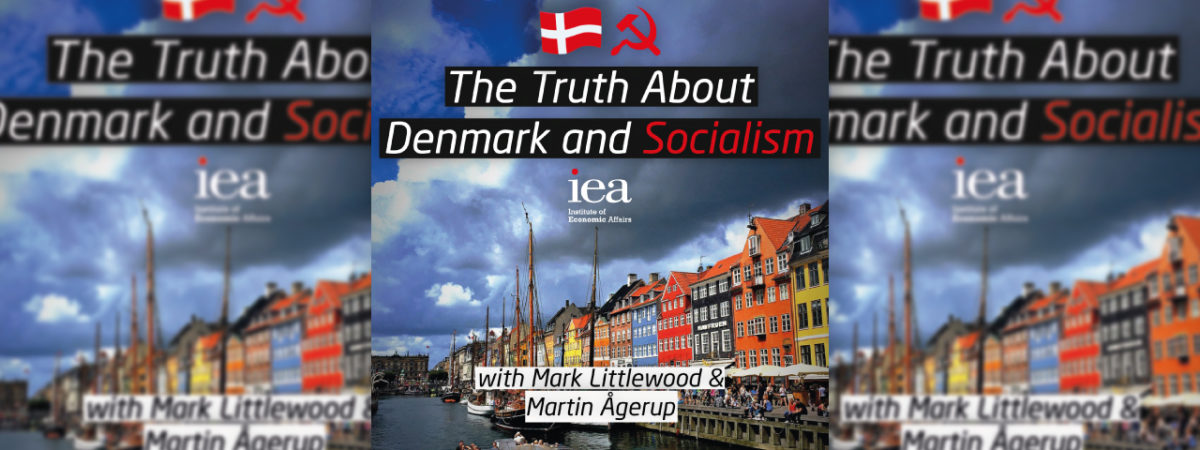School choice: top-down government reforms or bottom-up markets?
SUGGESTED



The first has begun with the fact of government intervention in education. It has explored ways in which more parental (and student) choice can be introduced into the state system – on the assumption that consumer choice coupled with school competition can raise quality and satisfaction within the constraints of state schooling, as they do in genuinely market-led areas. This was the approach of the IEA’s first education monograph, Education for Democrats (1964), which advocated state-funded education through a mixture of vouchers to parents and bursaries provided by schools, regulated by the state but provided by a mixture of private and state schools. Ideas exploring educational vouchers were continued in later publications in the 1960s and 1970s, to the extent that the erstwhile IEA research director, Arthur Seldon, suggested that all the “intellectual groundwork” for vouchers had already been prepared by the IEA by the time Margaret Thatcher’s Conservative government was elected in 1979.
The second approach has been to question the role of government in education, and hence to adopt blue-skies thinking about how educational provision for all can best be brought about, with or without the state. This was the approach adopted by E. G. West in his seminal work, Education and the State (1965). Here West examined the intellectual justifications for government to be involved in education and found them largely wanting. He pointed to the historical evidence from nineteenth-century England and Wales that showed almost universal schooling provision before the state got involved, and extrapolated from this to suggest only a very minimal role for government in education. This approach has been continued in IEA publications, including some of my own contributions, Education Without the State (1996), Government Failure: E. G. West on Education (2003) and most recently Education, War and Peace (2017).
These two approaches clearly bring about different policy prescriptions – and as the IEA publications have featured both the UK and developing countries, there are different policy prescriptions for the UK as well as for international development agencies. The first approach leads to “top-down” policy prescriptions about how best to bring elements of markets into state education, while the second approach embraces the “bottom-up” idea that market solutions in education best arise from the spontaneous actions of individual entrepreneurs, outside of any government reforms.
The two approaches, and their different policy prescriptions, are reflected in the essays brought together in the new IEA book, School Choice around the World, which collates evidence and argument from Europe, North America, sub-Saharan Africa and South Asia.
The first approach is exemplified in Chapters 2, 3, 4, 5, the second part of Chapter 6 and the last part of Chapter 8, where government reforms are outlined that are designed, or appear to be designed, to bring in some aspects of markets – parental choice and school competition – into state educational provision.
Clearly, each of these chapters brings with it some potential policy recommendations. For instance, Toby Young’s chapter is supportive of “Free School” policies, suggesting that they have led to higher educational attainment than the rest of the state sector. Another example is Nick Cowen’s chapter on Sweden, which lends support to further exploration of the educational voucher model.
One problem with these approaches is that experience suggests that there is huge resistance to significant reform of existing state education systems. I have mentioned how the IEA laid the “intellectual groundwork” ready for the introduction of vouchers in the 1980s – but what happened next brings the sobering realisation that voucher programmes may be a step too far for education’s vested interests. The Secretary of State for Education, Sir Keith Joseph, was convinced by the IEA’s work. A national petition demanding educational vouchers added to supporters’ armoury, as the idea went through the government’s policy committees. Despite this, at the 1983 Conservative Party Conference, Sir Keith announced that “the voucher idea was dead”. It was dead because the vested interests in education – bureaucrats in the Department of Education, in the local education authorities and the teacher unions – saw no benefit in disrupting the status quo.
So although the evidence from Sweden can be used to point to the success of liberalisation of education under a state-funded and regulated system, this does not mean such a system could necessarily be replicated elsewhere.
The second approach, with its policy ideas of “bottom-up” private educational provision, is featured in the first part of Chapter 6, Chapter 7 and the majority of Chapter 8. These all focus on the virtues of school choice in genuinely private educational markets.
What are the policy implications from these three chapters? Perhaps, only slightly tongue in cheek, one could say that these chapters suggest that the best education policy is no education policy at all. The evidence given in these chapters (with pointers to a huge body of evidence elsewhere) is quite extraordinary. It appears to show that poor parents in developing countries are not prepared to acquiesce in mediocre government provision, and want control and accountability from their children’s schooling. This leads them to use private schools, even though government provision is typically available at a lower cost to them than the private schools.
But rather than seeing this grass-roots movement as grounds for celebration, the three chapters also highlight how governments sometimes appear to want to over-regulate this sector. The case of the Right to Education Act in India is a good example. Who can be against the right to education? But the eponymous Act is leading, as the final chapter indicates, to thousands of low-cost private schools being closed in states across India, with hundreds of thousands of children being denied the education their parents have chosen for them.
“School Choice” (with capital letters indicating it is brought about through top-down government reforms) is happening across the world, with varying degrees of success; the chapters in this collection ably examine some of its features and policy implications across the world. But ‘school choice’ (in lower case, indicating it arises as a spontaneous order) is an extraordinary example of self-organisation. Low-cost private schools emerging to cater for the expressed needs of poor parents provides the strongest case for the virtues of a fully private education system. For me, this is the most inspiring lesson I draw from this collection.
This article is an edited version of the Foreword to School Choice around the World.




